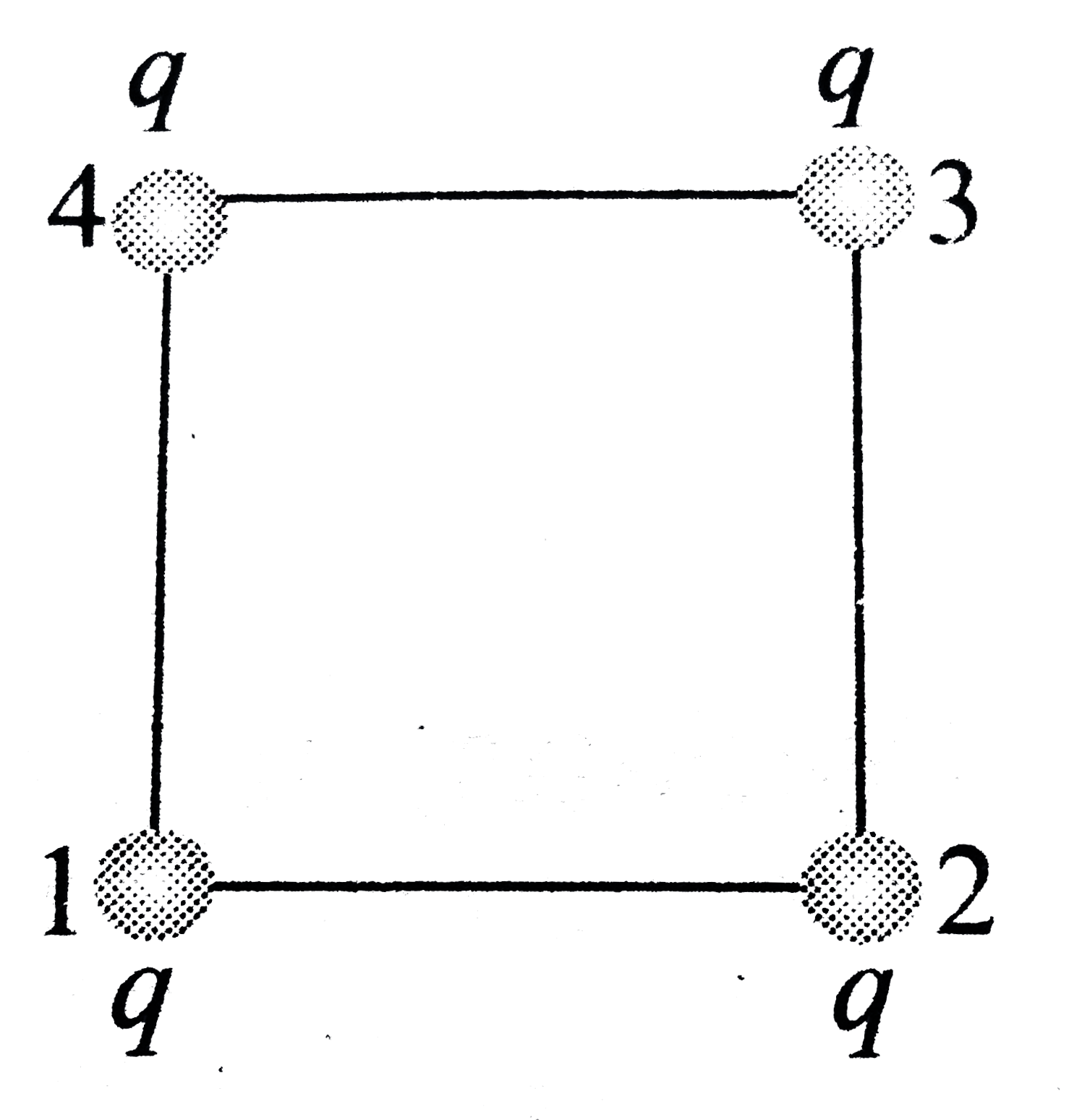Four identical point masses , each of mass m and carrying charge +q are placed at the comes of a square of sides a' on a frictionless plain surface .If the particles are released simulataneously ,the kinetic energy of the system when they are infinitcly far apart is Solution in Bengali
q2a(2√2+1)
q2a(√2+2)
q2a(√2+4)
q2a(√2+1)
Step by step video solution for Four identical point masses , each of mass m and carrying charge +q are placed at the comes of a square of sides a' on a frictionless plain surface .If the particles are released simulataneously ,the kinetic energy of the system when they are infinitcly far apart is by Physics experts to help you in doubts & scoring excellent marks in Class 12 exams.
Updated on:21/07/2023Topper's Solved these Questions
- QUESTION PAPER 2020Book:WB JEE PREVIOUS YEAR PAPERChapter: QUESTION PAPER 2020Exercise:PHYSICS (CATEGORY-II)
Explore 1 Video
- QUESTION PAPER 2020Book:WB JEE PREVIOUS YEAR PAPERChapter: QUESTION PAPER 2020Exercise:PHYSICS (CATEGORY-III)
Explore 3 Videos
- QUESTION PAPER 2007Book:WB JEE PREVIOUS YEAR PAPERChapter:QUESTION PAPER 2007Exercise:PHYSICS
Explore 50 Videos
Similar Questions
A conducting circular loop of resistance 20Ω and cross - sectional area 20×10−2m2 is placed perpendicular to a spatially uniform magnetic field B. which varies with time t as B = 2 sin (50πt) . Find the net charge flowing through loop in 20 ms starting from t = 0
View SolutionA charged particle moves with constant velocity in a region where no effect of gravity is felt but an electrostatic field →E together with a magnetic field →Bmay be present. Then which of the following cases are possible ?
View SolutionThe coefficient of volume expansion of a liquid is γ and its density at 0∘C is ρ. If the temperature is increased to t∘C then the change in density will be
View SolutionFour particles each of mass m are kept at the four vertices of a square of side 'a' . Find graitational potential energy of this system.
View SolutionFour identical point charges q are placed at four corners of a square of side a. Find the potential energy of the charge system.
 .
.
View SolutionFour identical particles each of mass m are arranged at the corners of a square of side length l. If the masses of the particles at the end of a side are doubled, the shift in the centre of mass of the system.
View SolutionFour identical charges i.e. q is placed at the corners of a square of side a . The charge Q that must be placed at the centre of the square such that the whole system of charges in equilibrium is
View SolutionFour particles of masses m, m, 2m and 2m are placed at the four corners of square of side a. Find the centre of mass of the system.
View SolutionA particle of mass m and charge q is placed at rest in a uniform electric field E and then released, the kinetic energy attained by the particle after moving a distance y will be
View SolutionFour identical spheres each of mass m are placed at the corner of square of side 2 m. Taking the point of intersection of the diagonals as the orgin the coordinates of the centre of mass are ?
View SolutionA particle of mass m and charge q is placed at rest in uniform electric field E and then released. The kinetic energy attained by the particle after moving a distance y is
View SolutionFour identical charges each .q. are placed at four corners of a square of side .a.. Find the charge to be placed at the centre of the square so that the system of charges is in equilibrium
View SolutionFour identical particles each of mass m are arranged at the corners of a square of side .a.. If mass of one of the particle is doubled, the shift in the centre of mass of the system is
View SolutionFour identical charges each ‘q’ are placed at four corners of a square of side 'a'. Find the charge to be placed at the centre of the square so than the system of charges is in equilibrium.
View SolutionFour particles each of mass m are kept at the four vertices of a square of side 'a' . Find gravitational potential energy of this system.
View SolutionFind the potential energy of a system of four particles each of mass m place at the vertices of a square fo side l. Also obtain the potential at the centre of the square.
View Solution